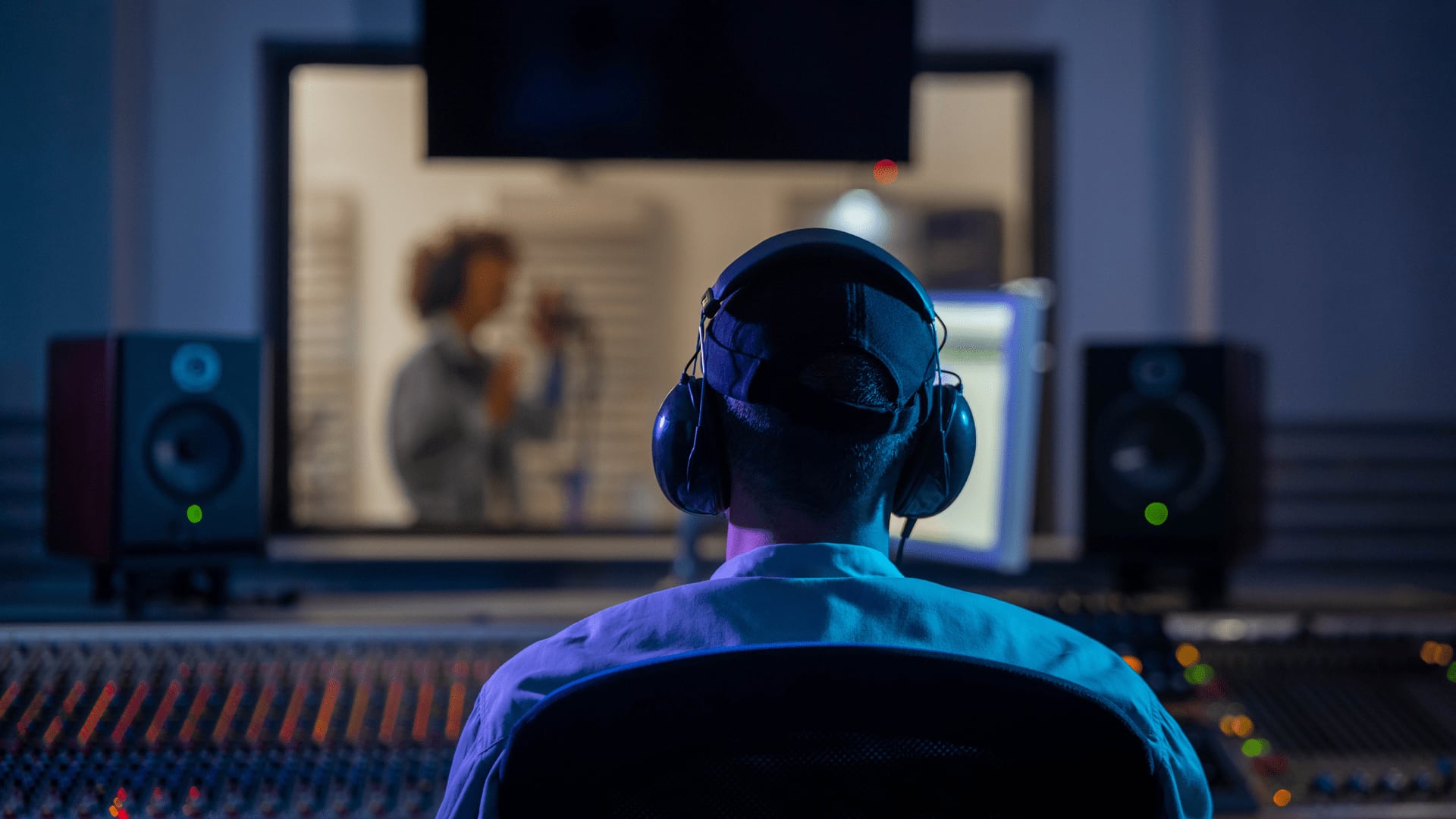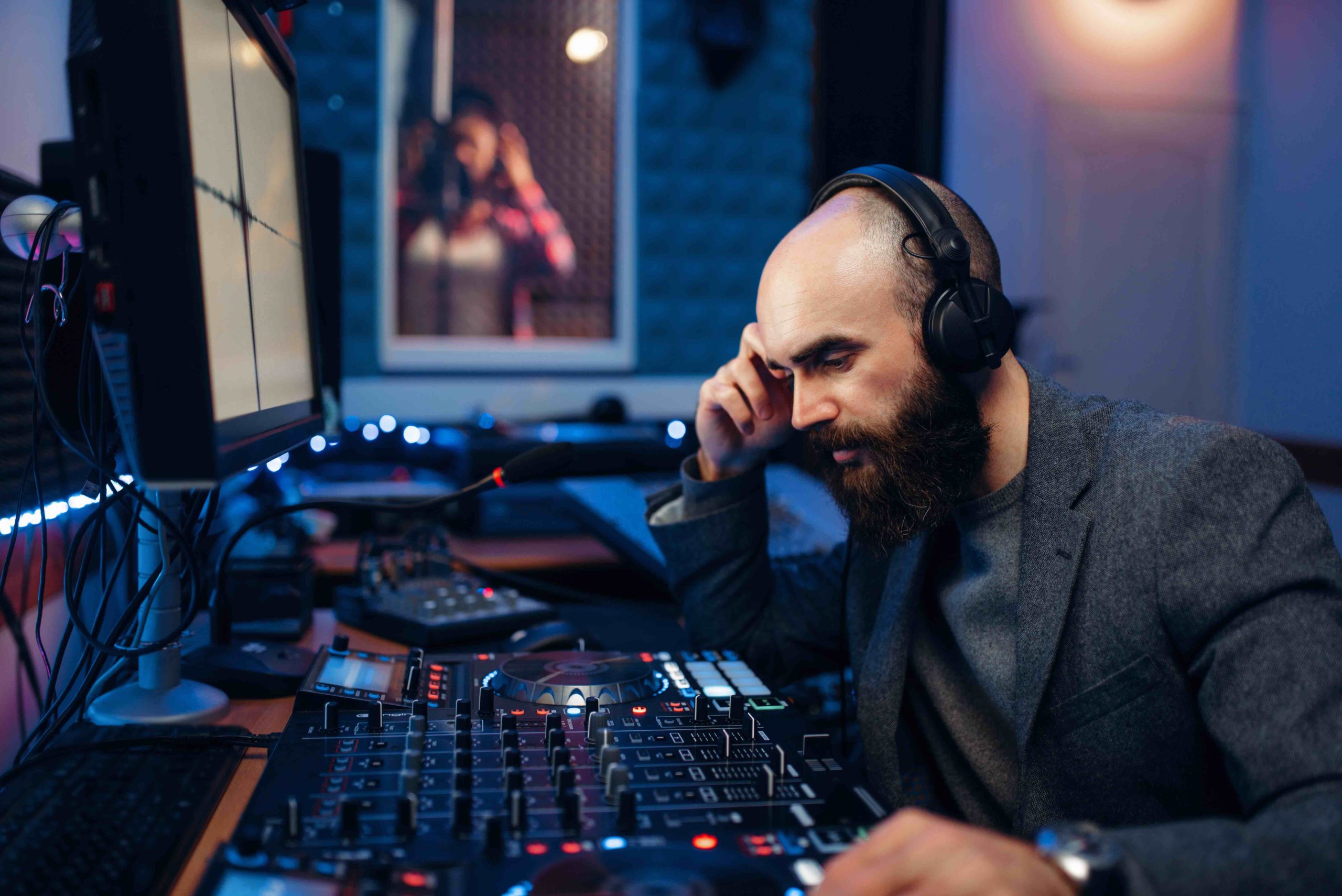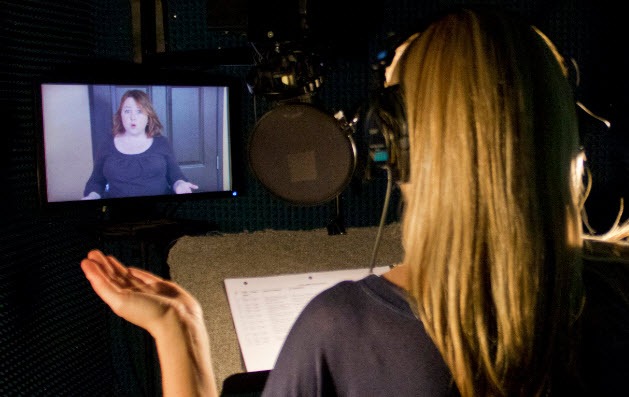What is dubbing and how should your company use it?
You may remember it from children’s films such as The Simpsons, Lion King, not to mention Harry Potter and the Philosopher’s Stone which has been dubbed into 79 different languages to ensure that the magic of Hogwarts could spellbind kids and their families across the globe. But dubbing is much more than that and can be used in many different contexts.
Are you unsure whether dubbing is right for you? Then you are guaranteed to find the answer here. In this post, we will take a deep dive into what dubbing is, how it works and why your business (and not just the film industry) should make use of it. All in all, we will help you understand the many advantages of the art of dubbing for an international business.
What is dubbing?

What size is dubbing then? Dubbing is a special part of post-production in film and video, where the original dialogue is replaced with new dialogue in a foreign language that is still adapted to the script. The word comes from the English dub, which directly translated means dubbing or dubbing.
It is a technique and process where the various layers of a finished video are mixed and processed with the external sounds such as speech, effects, music, etc., so that they are either highlighted, juxtaposed, supported or covered. Here, the new version must match the original version both in terms of content, timing, tone and style. This requires skilled voice actors and announcers, but also sound engineers.
In Denmark, dubbing is mostly related to language versioning of children’s films and animation, which are translated from one language to another. Classic examples are movies from Astrid Lindgren’s universe where lecture dubbing is often used, which means that the translated voices (f.x. Danish) are used with the original voices (f.x. Swedish) in the background. And then there is the ‘traditional’ approach used by many animated film- and production companies like Disney, Pixar, DreamWorks, etc. from English to Danish – this is classic dubbing.
But in reality, you experience dubbing every day. Not only in movies, but also in TV, YouTube, ads, Facebook, Instagram, and many other places.
How does dubbing work?

Now that you know what dubbing is, let us dive into how it technically works.
In terms of recording, dubbing works just like a voiceover, where one sound layer must be replaced by another. However, the dubber must imitate the behavior and mouth movements of another person in a completely different language. Therefore, the original script must be translated so that the dubbing version seamlessly reproduces the dialogue in the video for the language of the intended target group.
Here, timing is everything, and it is extremely difficult to adapt the dubbing to the original timing of the film. The translated dialogue must be synchronized with the time it takes for a character or actor to say the line – even down to word-level.
It must therefore not only match the content of the line and dialogue, but also its duration. This makes dubbing particularly difficult in those languages where some phrases require only four words and in other languages require nine. Dubbing is therefore an art form to dub properly without compromising the original script.
When ordering dubbing from an agency it is important to understand how challenging it can be for the dubber – even for experienced artists to deliver a seamless result. Because they have to build and imitate a character based on another person’s behavior and performance, and deliver the same experience, message, and feelings – regardless if the artist is offscreen or onscreen.
At Voicearchive, we do not work with dubbing ourselves, but our sister department ADRENALINE does, whose expertise creates tailor-made solutions that can match your project and expectations.
What can you use dubbing for as a business?
It might be tempting to think that dubbing is not relevant for your company, now that you have nothing to do with the film industry, or because you are in Denmark, where dubbing is not as widespread as in other countries. But that is far from true.
Dubbing is and can be used for much more than just animated films, series, and feature films aimed at children who cannot read subtitles.
For example, is it beneficial for:
- advertisements
- profile film
- e-learning videos
- corporate films
In other words, companies of an international nature in particular take great pleasure in working with the dubbing of their video material, whether it is internal or external so that they ensure that every one relevant understands the message.
Why should you dub?

There is a big gain in using dubbing rather than subtitles if you are part of an international company.
The advantages of dubbing are that the viewer does not need to read subtitles, and there is no barrier between what is spoken and what is read. The message will therefore be understood better and faster. In addition, you also ensure that children, dyslexics, illiterate people, people with impaired vision, or people with a different mother tongue can follow along.
More precisely, you get with dubbing:
- greater authenticity with the intended target group
- greater inclusion in all age groups
- more accurate dialogue
- no abbreviations in the dialogue, as you otherwise see in subtitles
- no problems with reading among the target group
- a better portrayal of the characters or the narrator.
This can be a great advantage if you are launching a new product in a particular market in the world, or if you need to ensure that your international employees and departments have the same information and knowledge in an area.
Is dubbing the same as Automated dialogue replacement (ADR) or Audio description (AD)?
Dubbing is not the same as Automated dialogue replacement (ADR) or Audio description (AD), although they can easily be confused with each other. Dubbing is where the original dialogue is replaced with a new one in another foreign language.
ADR, on the other hand, is if the voices need to be replaced, or the voice soundtrack is damaged and cannot be saved, and you, therefore, record again. This can be done both by the video’s featured actors or the voice actors who repeat the words and match the wording and mouth movements in the original clips, but without using the precision of the dubbing.
AD is a description of the image page and the action in a video for the blind and partially sighted. It can, for example, be for the action in a film, series, documentary, concert, or opera, so that what was shown – and thus the experience – is not lost. This can, among other things, also be relevant for materials from the public sector, where citizen communication must reach a broad target group, and understanding must not be lost.
But is dubbing the same as voiceover?

No, neither is it, although dubbing and voiceover are undoubtedly related. They resemble each other in terms of the technical aspect, where a new sound layer must be added to a video, and dialogue from the script must thereby be recreated anew.
But a voiceover is more narrative and descriptive in its content and stripped of emotion and tonality in its form, whereas dubbing tries to translate the dialogue in terms of tone, emotion, length, and content so that it matches the original as much as possible.
Need help finding your next dubber?
We hope this post has helped explain what dubbing is and how using it can be beneficial for your business.
At Voicearchive, as I said, we do not specialize in dubbing, but our departments in London and South Africa do. Here we have very special specialized teams with skilled voice actors and sound technicians who can help you.
If, on the other hand, you are looking for a voiceover, we can be helpful with several decades of experience and the option of more than 150 languages. It gives you plenty of opportunities to get into different markets. Are you in doubt as to whether you should have dubbing or a voiceover? Then you just call in and our experts will help you.